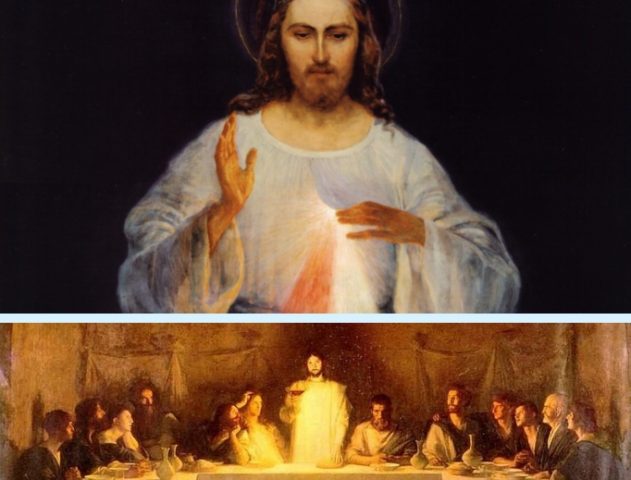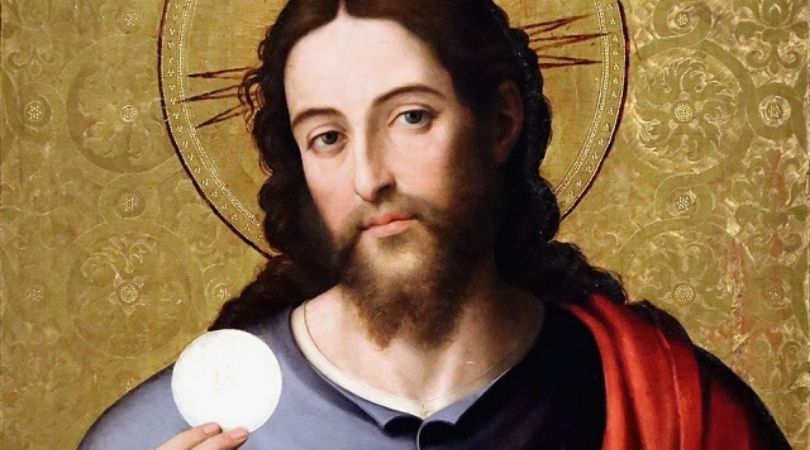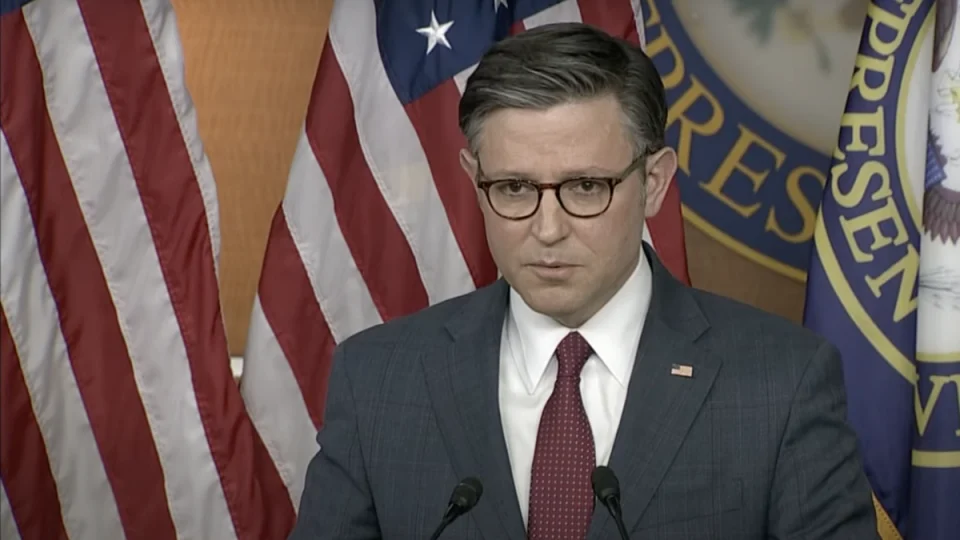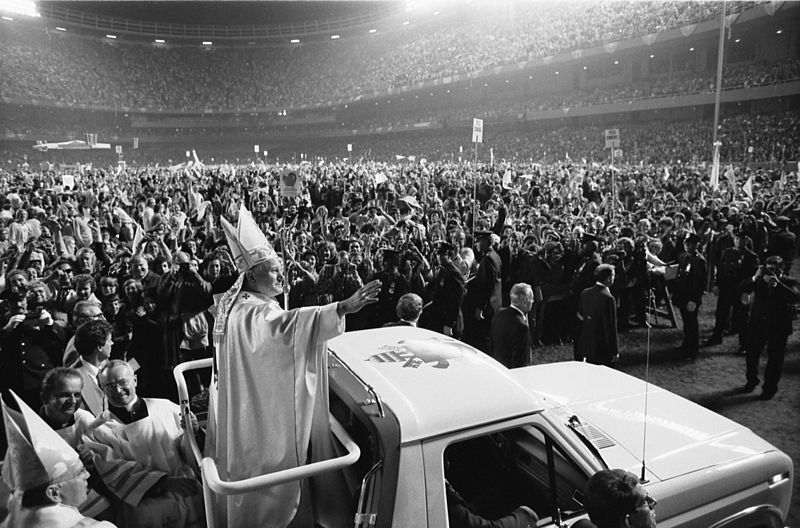Father Roger J. Landry: Holy Thursday and Divine Mercy

Saint of the Day for April 19: St. Gianna Beretta Molla (Oct. 4, 1922 – April 28, 1962)
April 19, 2019
Cardinal Tobin: Catechism Language ‘Very Unfortunate’ on Homosexuality
April 19, 2019
original image of Divine Mercy; The Last Supper, by Bouveret, 19th century
COMMENTARY: This perpetual need for purification, found at the foundation of the priesthood, is likewise found at the beginning of every authentic renewal of the priesthood and of the Church.
By Father Roger J. Landry, EWTN News, Inc., 4/18/19
As the Sacred Triduum begins Holy Thursday, the Church ponders three interconnected realities: Christ’s washing of the feet of his apostles, instituting the Eucharist, and establishing the priesthood to perpetuate the Eucharist in memory of him.
These are always inexhaustible mysteries to actualize in any liturgical cycle; this year, however, when we can feel as if we began Lent not just on Ash Wednesday but last June, with the re-emergence of clergy sexual-abuse crisis, they contain far more light and power. They contain the seed of the renewal of the priesthood and the true reform of the Church.
Jesus’ deeply troubled words at the beginning of the Last Supper, “Amen, amen I say to you, one of you will betray me” (John 13:21), were actually charitable. It would have been more accurate to say, “Truly I tell you, tonight all of you will betray me. You will deny me. You will run away from the cross. All but one of you will abandon me as I die for you.”
Despite his knowing all that would transpire, however, he accounted the eventual conversion of the Eleven weightier than the imminent betrayal of all Twelve — and courageously went ahead with the liturgical celebration of the new and eternal Passover. He rose from the table, removed his outer garments, girded himself with a towel, dropped to his knees, poured water into a basin and began to wash the feet of the apostles.
We are used to focusing on the Lord’s humility in doing so: He who took on the form of a slave (Philippians 2:6-11) did the work of a slave, washing the filth off his companions’ feet and leaving them an example of humble service to emulate.
But there is far greater significance to this gesture. As Pope Benedict emphasized in a 2008 Holy Thursday homily and in the second volume of his acclaimed Jesus of Nazareth, Jesus was symbolically cleansing them of their sins for the exercise of the priesthood and the celebration of the Eucharist. Jesus was washing not merely their soles, but their souls.
“Jesus’ gesture,” Pope Benedict wrote, “was a ‘sacrament’ (a visible sign) of the entire mystery of Christ — his life and death — in which he draws close to us, enters us through his Spirit and transforms us, [and] truly ‘cleanses’ us, renewing us from within.”
He expanded on the meaning of Jesus’ words to Peter: that he must wash his feet otherwise he would have no part in him, but didn’t need to wash his head and hands because he had been “already bathed.”
Pope Benedict commented, “The complete bath … can only mean Baptism, by which man is immersed into Christ once and for all, acquiring his new identity as one who dwells in Christ.”
In the life of every Christian, not to mention priest, the sacramental gift of baptism “constantly requires completion: ‘washing of feet.’ … We’ve been bathed in baptism but we need to be cleansed from the contact we have with the various ‘filth’ we encounter in the world, so that we may be ready to enter into divine worship.”
That’s what Jesus does in the sacrament of his mercy, Pope Benedict states, where Jesus is “continually on his knees at our feet and … carries out the service of … purification, making us capable of God.”
The basin in which he washes us is “his love, ready to face death. Only love has that purifying power that washes the grime from us and elevates us to God’s heights.” This is the means by which Jesus, “having loved his own who were in the world, loved them to the extreme” (John 13:1). This perpetual need for purification, found at the foundation of the priesthood, is likewise found at the beginning of every authentic renewal of the priesthood and of the Church. Christ seeks to renew his priesthood through the exercise of his mercy. And he does this as an example so that those priests so washed may in turn take that same basin of Christ’s mercy out to cleanse the sins of the world.
The Eucharist Jesus instituted immediately afterward is a continuation of that extreme mercy.
Jesus made the connection explicit in commanding the apostles to receive and drink the chalice of his blood, poured out for the remission of sins, and to do that in his memory. On Calvary the following day, he culminated his priestly sacrifice, begging the Father to forgive those for whose sins he was dying, “for they know not what they do.”
Good Friday begins, by Jesus’ request to St. Faustina Kowalska in the 1930s, a novena to his Divine Mercy. It finishes at the end of the Easter Octave, when the Church ponders Jesus’ establishing of the sacrament of his mercy: He wishes his peace on his apostles and says: “Just as the Father sent me, so I send you” — and we know that God the Father sent Jesus as the Lamb of God to take away the world’s sins — and breathes on them the power of the Holy Spirit to forgive and retain sins in his name.
Throughout this novena, in the Chaplet of Divine Mercy, the Church offers God the Father the Eucharist — Jesus’ Body, Blood and Soul and Divinity — “in atonement for our sins and those of the whole world.” This is the supreme priestly sacrifice of the Church, made together with Christ the High Priest and every priest sent out in persona Christi.
Each of the days of the novena, Jesus requested specific prayers be made: on Good Friday, for all mankind, especially sinners most in need of his mercy; on Holy Saturday, for priests and religious; on the other days, for the devout and faithful, those who do not know or believe in Jesus, our separated brothers and sisters, the meek, humble and children, those who venerate his mercy, those in purgatory, and, finally, the lukewarm, who are particularly vulnerable.
This year, as Catholics recognize acutely the filth that covers the feet of the Church and so many of her priests and bishops, we ponder the urgent need for the renewal of the successors of the apostles and their priestly collaborators through Divine Mercy.
As the media, attorneys general and Church tribunals remind them and all of us of the ways clergy have “surely betrayed” the Lord and need to be bathed by him of worldliness and sinfulness, it is key for us to keep this dimension of Divine Mercy in the forefront and to live with particular fervor — and perhaps for the first time — the novena requested by the Lord.
This is a time the Church must go together to bathe the Lord’s feet with our tears of contrition and anoint them with precious aromatic nard in preparation for his death and burial, as he seeks to wash our feet thoroughly in return — and raise us with him.
Father Roger Landry is a priest of the Diocese of Fall River, Massachusetts.
Copyright © 2019 EWTN News, Inc. All rights reserved.




